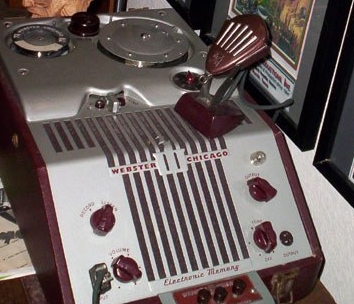Webster Chicago & Webcor 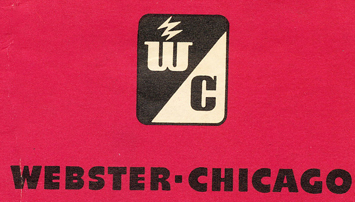
Webster Chicago which later became Webcor was founded in 1914. We have been unable to find any additional details of how or who founded the company. However the Webster Chicago company was acquired by the Rauland company in 1941.
Here's some additional information we found about the company on line.
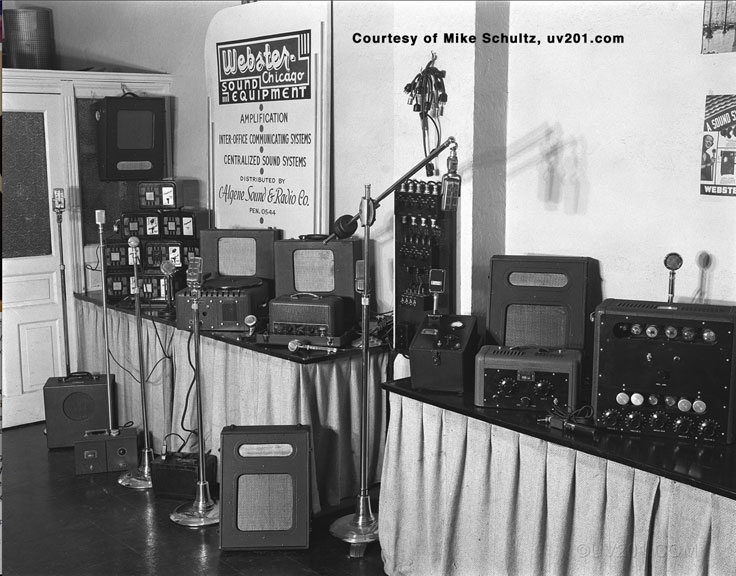 The Webster-Chicago Story (www.webster-chicago.com/wcstory.htm)
The Webster-Chicago Story (www.webster-chicago.com/wcstory.htm)
Webster-Chicago Corporation of Chicago, Illinois, also later known as Webcor was once a leading manufacturer of business and consumer electronics spanning more than half a century from 1914 to the late 1960’Seth product line included phonographs and recording equipment, public address systems, amplifiers, intercoms and power supply's. 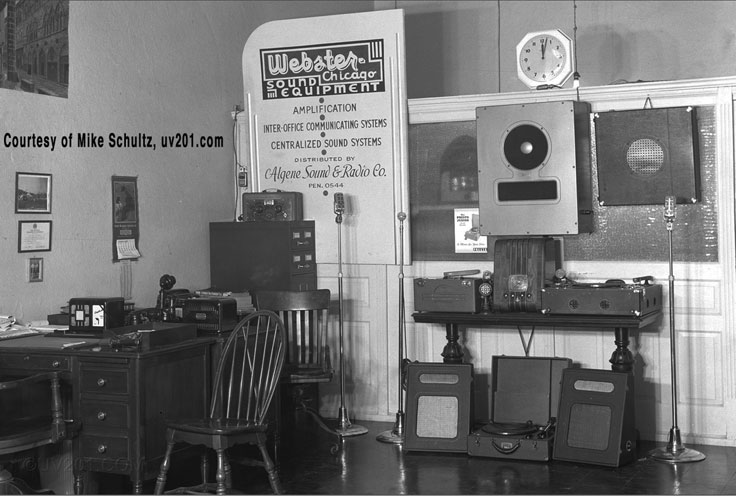
In 1925 the first factory built radios in this country included “B” battery eliminators and power packs made by Webster-Chicago. In 1926 the company designed and produced amplification equipment that helped create some of the first talking motion pictures. Webster-Chicago went on to produce and manufacture amplification and phonograph equipment for entertainment, public address and also business intercom systems which were state of the art for the time. They offered a new method of inter-office communications in large scale applications such as factory’s, office buildings, hospitals and schools.
Webster-Chicago Phonographs and Diskchangers were among the finest made and often incorporated by other leading manufacturers into some of the highest quality radio and phonograph combinations. The company introduced many different models and designs and led the industry in several innovations, including key contributions in pioneering the mutli-speed automatic Diskchangers that were famous for many years.
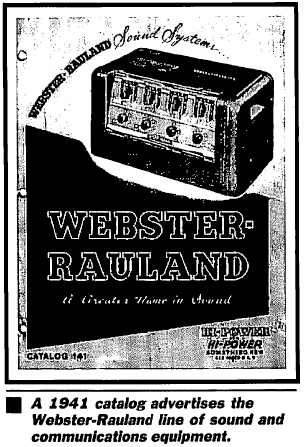 In 1941 Webster Chicago was acquired by Rauland-Borg. In a 1941 catalog the electronics "were manufactured underlicense with Electrical Research Products, Inc. (ERPI), subsidiary of Western Electric Co., Inc., and AT&T. ERPI later became known as All Technical Service Company, or Altec which was later acquired by Lansing Company. The Webster Chicago - Rauland Borg association was said to have begun before the 1941/42 acquisition of the WC intercom and commercial sound business.
In 1941 Webster Chicago was acquired by Rauland-Borg. In a 1941 catalog the electronics "were manufactured underlicense with Electrical Research Products, Inc. (ERPI), subsidiary of Western Electric Co., Inc., and AT&T. ERPI later became known as All Technical Service Company, or Altec which was later acquired by Lansing Company. The Webster Chicago - Rauland Borg association was said to have begun before the 1941/42 acquisition of the WC intercom and commercial sound business.
In 1945, Webster-Chicago became a licensee of the Armour Research Foundation and began manufacturing wire recorders,the first product being a version of the Armour "military" wire sound recorder which it sold to the U.S. Navy. The stainless steel wire media was perfect for military applications as it could withstand extreme temperature and climate variations in the field. After World War II came to an end, Webster-Chicago continued to produce wire recorders and introduced a whole new product line oriented toward the civilian market.
The following photos of a US Navy Webster Chicago 13-A-3-J wire recorder were donated to MOMSR by Andrew Curlik.

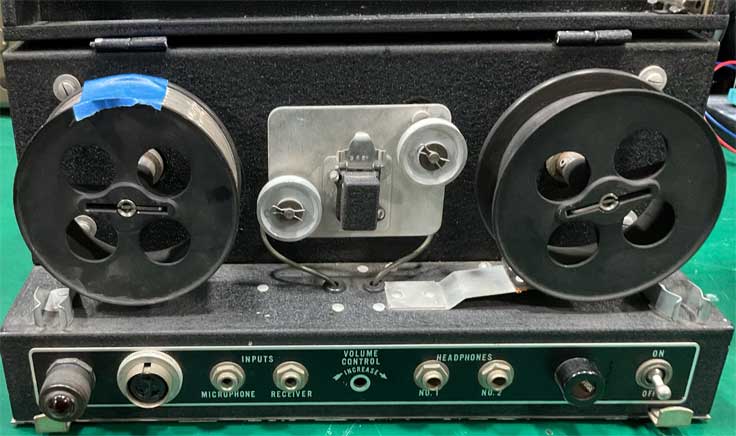

The Webster-Chicago brand was one of the top selling wire recorders ever made and the company specialized in models for both office dictation use and the private consumer market. The operation of the transport worked whereby a stainless steel wire with a diameter of .0036 inches traveled past a vertical motion recording head at an average of 24 inches a second. The units produced very lifelike sound quality, especially in some of the later high end models whereby the cabinet and amplification circuits were redesigned specifically for better frequency response. The production run lasted from about 1945 through the early 1950's.
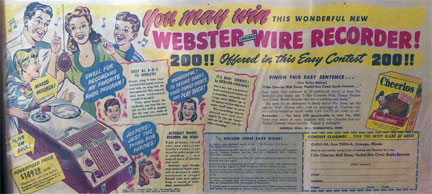
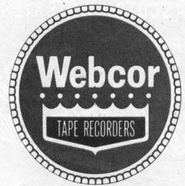
In 1952 the company launched a new line of tape recorders and eventually discontinued its production of the modern wire recorder as the industrymovement towards Hi-Fi was in it's initial stages. In that same year Webster-Chicago Corporation also decided to change its name to Webcor, a shortened and more streamlined name to take the company forward into the 1950’s. The conversion of the name actually showed up on some of the product line that year. One example was the model 210 Tape Recorder in which the top head cover displayed the name Webcor and the bottom head cover displayed the name Webster-Chicago Electronic Memory.
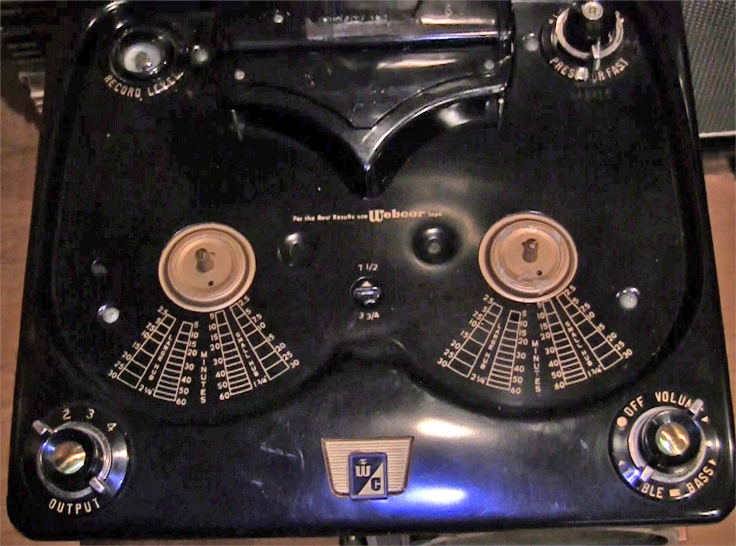 The Model 210 was also the first tape recorder built for the consumer market with dual record/play heads and two balanced induction motors. This would allow for playing a tape in both directions without having to turn the reels over by hand and a single TV type control knob for ease of operation, huge selling points at that time. In 1953 the company also produced a matched 3 speaker series which began the company's endeavors into the Hi-FI arena. This development was also incorporated into the Webcor (Fonograph) product line as well.
The Model 210 was also the first tape recorder built for the consumer market with dual record/play heads and two balanced induction motors. This would allow for playing a tape in both directions without having to turn the reels over by hand and a single TV type control knob for ease of operation, huge selling points at that time. In 1953 the company also produced a matched 3 speaker series which began the company's endeavors into the Hi-FI arena. This development was also incorporated into the Webcor (Fonograph) product line as well. 
Webcor continued to produce consumer electronics throughout the 1950’s and into the later 1960’s creating many innovations in Hi-Fi andStereo. The company did have business problems in later years as the industry became more competitive and saturated with foreign and domestic electronics.
The greatest testament to the quality of Webster-Chicago products is the fact that so many are still working some five or six decades later and can be found for sale on many auction and vintage electronics sites. Whoever said "They just don't build them like they used to" must have meant Webster-Chicago.
The wire recorder business was short-lived. In 1952 Webcor introduced its first magnetic tape recorder, and by 1955 magnetic tape recorders over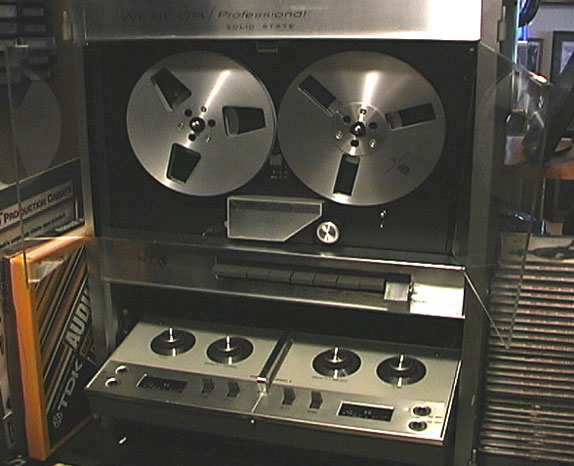 took wire ones.
took wire ones.
In the 1960s the firm began to face strong competition from German and Japanese imports. It was purchased by US Industries in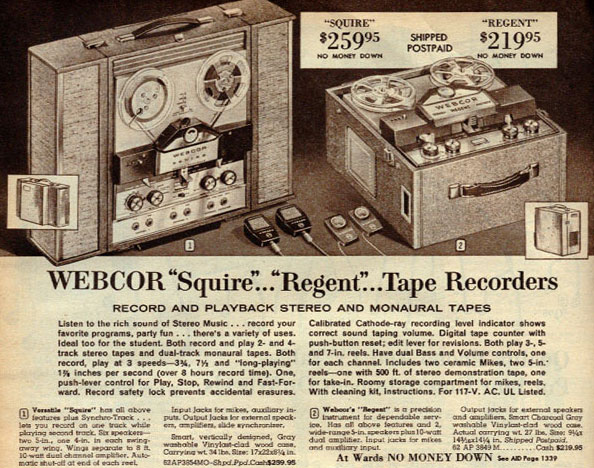 1967, and faded from prominence in the 1970s.
1967, and faded from prominence in the 1970s.
The last Webcor reel tape recorder built was the Webcor Professional CP-2550 (left)
Rauland - Borg and Webster Chicago history
Rauland-Borg's roots are in the founding, in 1922, of the Rauland Company by inventor and radio enthusiast E. Norman Rauland. In 1924, he became a pioneer in the radio broadcast industry by launching his own, Chicago-based radio station, WENR. Throughout the Depression, Rauland manufactured power amplifiers and equipment for public address systems. During this time, the Rauland Company won government contracts to produce radio and communication systems for the military.
In 1941 Norm Rauland and George Borg entered a partnership that would change the history of the company  forever. The Rauland Corporation acquired the Webster-Chicago Corporation, a leader in school communications, and Rauland became firmly established as the dominant supplier of internal school communications systems.
forever. The Rauland Corporation acquired the Webster-Chicago Corporation, a leader in school communications, and Rauland became firmly established as the dominant supplier of internal school communications systems.
In 1942, the Rauland Corporation acquired Baird Television of America. Rauland began developing the cathode ray tube (CRT), and as a result, the company became an important supplier of communications and radar equipment during WWII. After WWII, the Rauland Corporation began manufacturing CRTs for 10 and 12 inch televisions.
In 1948, two major events happened. First, Zenith Radio Corporation purchased the Rauland Corporation to acquire the CRT business. Second, Norm Rauland and George Borg started a new company, Rauland-Borg Corporation, for continuing the sound and communications business. As the company further developed its commercial and industrial communications components, they remained an important military contractor providing such essential products as the Navy's ship-to-shore radios, airborne radar jamming transmitters, walkie-talkies, classified cryptographic switching adapters, tank radios, intercom systems and radios for arctic regions.
In the early 1960s, the use of transistors was still limited but Rauland-Borg demonstrated its technological leadership by transforming its entire line of sound and communications products to transistorized and solid state components. Recognizing the need to keep school instructors and staff in touch with each other, Rauland-Borg introduced the first generation of Telecenter® products in 1968. Telecenter® was the first-ever commercial application of touch-tone technology which has since become the backbone of school communications, worldwide.
In 1979, after the acquisition of the Picker-Briggs Company, the prestigious manufacturer of the Responder® health care communications systems, Rauland-Borg established itself as a leader in nurse call communications.
In 1989, Rauland-Borg acquired Biamp Systems Company, a long-time designer and manufacturer of Biamp® professional audio equipment. In the 90s, the company expanded its existing product lines into Latin America and the Pacific Rim. Today, we respond to market needs worldwide with two distinct communication system product lines: Responder®, designed for the healthcare industry and Telecenter® systems which serve the educational market. Both product lines reflect our long-standing commitment to the cutting edge of communication innovation, and help ensure that we always have a product that is an exact fit for our customers' needs.
Here's some correspondence we received from Bill Carpenter who worked for Webcor, as well as Ampex. He provides information about Webcor's last reel tape recorder the Webcor Professional CP-2500. 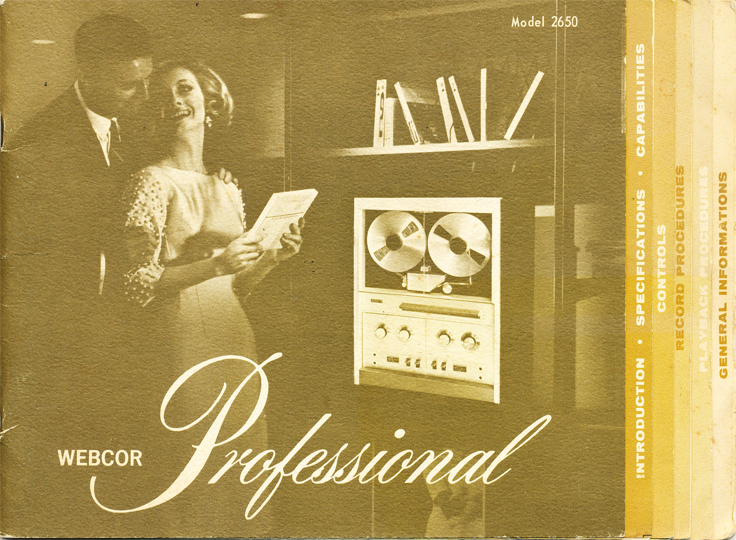
Thursday, August 6, 2009 at 11:13:07
To: Martin, Phantom productions, Inc.
I just found your directory/museum and I think it's great.
I have a 1956 vintage, Bell & Howell "TDC" 3 motor audio recorder, which I bought in early 1956, and used to start a recording business.
Later I worked for the Govt. Div of Webcor, 1959-1964,
Webcor 1964-1965 ( I worked on the Pro 2500 product)
Ampex 1965-1971 EIPD ( Elk Grove, Il) on early 1" video recorders
Ampex 1971-1996 Redwood City,Ca, Broadcast Video Records, product management, marketing management.
I have spent my entire professional business career in magnetic recording, 12 years in design, and the remainder in management.
-----------
Hi again Martin ("Phantom")
No, The 2500 was not any cutting edge design, at least in the tape transport design. A typical BFB design of the period.
I should explain, "BFB", was our slang for " Babies First Burp", sorta like "point & shoot" for the late simple, automatic 35mm cameras.
The real development was in the sound output system.
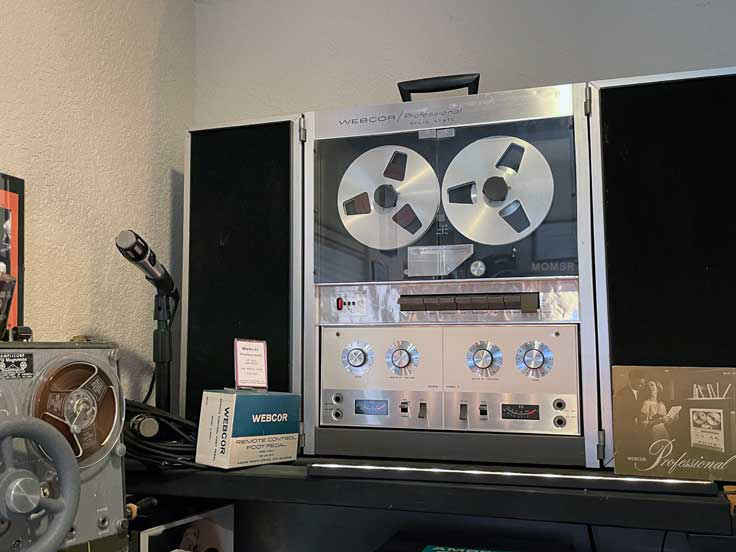 The solid state transformer-less stereo amp was "bulletproof" in a day when a Stereo 10W/channel RMS amp was a scary design at best.
The solid state transformer-less stereo amp was "bulletproof" in a day when a Stereo 10W/channel RMS amp was a scary design at best.
The speakers were a pneumatic loaded and were a acoustically sealed box, "bookshelf size" which were a cheap copy of the Acoustic Research AR-2a design.
They were sturdy plywood boxes, lots of fiberglass material for filling and even had a sealed RCA phono jack to make spec's
They contained a 8" soft edge long throw speaker and a 3.5" tweeter.
On low and mid range they were equal to the AR-2a's, but on the high end is where the outperformed everything available in the marketplace, except the Ionic tweeter which used a "blue gas", which was visible, and cost in the + !,000$ area, in 1965$.
The trick of the tweeter was that in trying to equal the high end performance of JBL's, Titanium Dome tweeter which was only part of the highest end systems, the design engineer stumbled on to something very great and very cheap. It was 3.5", very hard paper coned tweeter with a big magnet structure, and in our tests, the limiting factor was the spider.
In case you have never taken speakers apart, the spider is the device that centers the voice coil in the area around pole piece of the magnet.
When the engineer started cutting away portions of the spider, the performance improved and the tweeter was much flatter in response.
So, when it got so small & thin, he looked for something else to support & center the voice coil, and what worked very well was GREASE!
Not just any grease, but Dow Corning's, space age Silicon grease, namely DC-200, which was close to peanut butter in it's consistency, but silky smooth, and very slippery. They added a turned aluminum pole piece on the front of the magnet pole piece, which looked good, and did a small amount of field shaping, but the real breakthrough was replacing the spider with grease.
The speaker builder figured out how to contain the grease since it did not run and was stable over a wide temperature range.
When this was all complete, the SUPER Tweeter cost us about $3.26 each in a 100 unit quality purchase.
Many years later the speaker folks, used the same grease trick to dissipate heat to keep voice coils in big, high power speakers for burning up.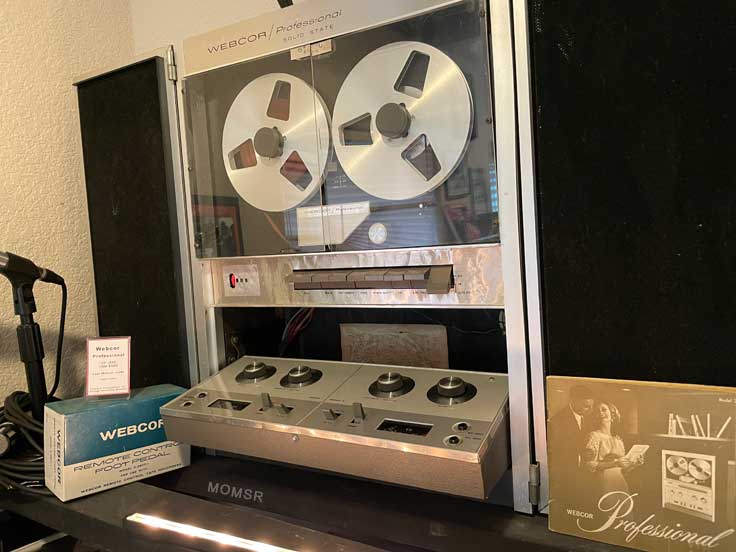
The other great feature of this product, was that to make the amp " bulletproof, a barretter, was added in series with the output transistors, which in essence, was a low resistance device in series with the output device which would change in value with increased current.
This was in the form of a 12V, taillight bulb, with two identical filaments and it was mounted on the small heat sink, between the two sets of power transistors, with wire leads going thru the pc board and a gob of silicon heat sink grease held the bulb in place during assembly.
So, when you were driving the system close to the 10W limit, the bulb would get very bright, and if you knew where to look when we were driving the system with our favorite test recordings, Leon Barry's pipe organ music, you could easily understand how well the system was working, if your ears could stand the sound pressure.
I was asked to support the first major product dealer demo, with the sales manager at the Friar's club in NY city, on about 2 hours notice, when somebody else backed out.
I said I would do it, only if I could take my own demo tape to show the system properly.
The demo went well, and I used this amp for my home stem for the next ten years, when it got replaced by a Receiver.
Bye for now, Bill Carpenter

